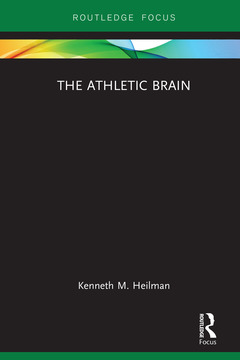Description
The Athletic Brain
Author: Heilman Kenneth M.
Language: English
Subject for The Athletic Brain:
Keywords
Spinal Cord; brain; Central Sulcus; brain anatomy; Brain Derived Neurotrophic Factor; cortex; Recurrent Perseveration; praxis; Ideomotor Apraxia; motor learning; Vice Versa; motor memory; Improve Response Inhibition; action sequencing; Head Injuries; action recognition; Primary Visual Cortex; akinesia; Left Hemisphere; abulia; Brain’s Gaba; hypokinesia; Left Handed Batter; response inhibition; Chronic Traumatic Encephalopathy; visual attention; SEBT; attention; Hand Preference; visual perception; Semicircular Canals; emotions; Left Hand; moods; Left Handers; anger; Continuous Perseveration; depression; Primary Motor Cortex; memory; Left Inferior Parietal Lobe; executive function; Athlete’s Emotions; Interactive Sports; Kenneth Heilman; Premotor Cortex; Visual Association Cortex
Approximative price 21.43 €
In Print (Delivery period: 14 days).
Add to cartPublication date: 06-2019
· 15.2x22.9 cm · Paperback
Approximative price 135.96 €
In Print (Delivery period: 14 days).
Add to cartPublication date: 07-2018
· 15.2x22.9 cm · Hardback
Description
/li>Contents
/li>Readership
/li>Biography
/li>
Many parts of the athlete?s body are important for performance, such as strong muscles and bones; healthy lungs and heart; and several sensory systems, including the vision, touch, and joint position senses, and the vestibular system for balance. However, the critical element for athletic performance is, "not what you have but how you use it." The organ that decides "how you use it" is the brain. This book explains how the brain allows the athlete to perform.
The book starts with an outline of brain anatomy, which is necessary to understand how the brain functions. The book then outlines many critical aspects of the athlete?s brain, including learning motor skills; decision-making; hand preference; visual perception of speed, distance, and direction; balance; emotions and mood. Finally, the book discusses the adverse influence of brain injuries.
The Athletic Brain
TABLE OF CONTENTS
Chapter 1: Introduction
Brain Anatomy
Brief Overview
Sensory Cortex and Sensory Association Areas
Motor and Premotor Cortex
Prefrontal Cortex
Subcortical Areas
Cerebellum
Types of Sports
Chapter ll: Movement Action Programming
The Praxis "How" System
Learning New Athletic Motor Skills
Motor Memory
Practice
Specialization
Precision
Action Sequencing
Action Recognition
Strength
Chapter lll: Action-Intention: "When" Programming
Introduction
Action Initiation
Deficits in Planning and Action Initiation: Executive Dysfunction
Akinesia and Abulia
Hypokinesia
Reward
Reward Network
Reinforcement
Response Inhibition
Motor (Action) Impersistence
Motor Perseveration
Chapter lV: Handedness
Chapter V: Attention
Definition
Neuroanatomy of Attentional Networks
Vigilance
Chapter Vl: Visual Perception
Chapter Vll. Balance
Chapter Vlll: Emotions and Mood
Anger
Depression
Chapter lX: Traumatic Brain Injury
Memory
Executive Functions
Emotions and Mood
Chronic Traumatic Encephalopathy
Chapter X: Influence of Exercise on Age Related Cognitive Decline and Dementia
References
Kenneth M. Heilman, MD, is currently a Distinguished Professor Emeritus of Neurology at the University of Florida and a Staff Neurologist at the Veterans Affairs Hospital in Gainesville, Florida. In addition to being a clinical neurologist and an educator, he performs research on brain functions and diseases. He has written more than 600 journal articles and authored or edited 16 books. He has received many honors including being an Honorary Member of the American Neurological Association and a Fellow of the Academy of Neurology.




